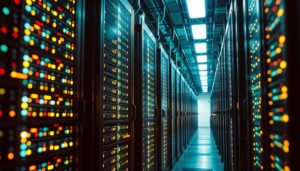Market Update 3rd February 2025

Just what the semiconductor ordered
With the Donald Trump once again dominating the headlines (this time on tariffs) one could be excused for consulting an AI assistant about what to write on this week. If one did, a closer look at how DeepSeek sent shockwaves through financial markets would likely be the recommended subject to go for. So here we go.
The major tech groups currently spend hundreds of billions on capex, which has helped power the semiconductor supercycle. The Chinese seem to have created an excellent artificial intelligence system by using older technology and at a cost of just $5.6m. This has put the cat among the pigeons for those at the cutting edge of the semiconductor industry by calling into question the future demand for more powerful chips. That is a debate which has largely been non-existent, or at least deeply one-sided, until now.
The impact on the market was sufficiently bad that journalists started sensationalising how much had been ‘wiped off’ the value of Nvidia on Monday. My favourite phrasal verb, which is seemingly exclusively reserved for market falls, was trotted out over 4,000 times in the week’s write ups according to Google’s search data. Writers these days really are getting lazy. How long before we actually ask AI for content ideas?
But joking aside, there are several issues that require attention here.
Did the DeepSeek-V3 system cost less than $6m to develop? Yes, and no. That widely quoted figure is the training cost associated with renting the power of around 2,000 Nvidia H800 graphic processing units (GPU), which are not as powerful as later models but were used by the Chinese developers due to export restrictions. For context, a single H800 GPU retails for tens of thousands of dollars. It is not clear how much the previous work leading up to this finished version would have cost, and there are labour and other costs too. Perhaps the best way to think about this figure, which is still startlingly low, is as the cost it would take to replicate the model.
Speaking of replication, there is quite a lot of chatter around about how Deepseek may well have piggybacked on Open AI infrastructure. We shall see what comes of this line of enquiry in the future.
The effect on the market has been more observable. According to the latest MSCI factsheet, Nvidia accounted for 6.4% of the American market as at the end of December. Microsoft and the other tech companies make up another 25.8%. MSCI classifies Amazon as a consumer stock, so if we elect to add that in, getting on for $4 in every $10 in the world’s most important market is in the technology space.
That concentration tells us calls on the biggest companies today are significantly more important than the equivalent decisions in years gone by.
We do not think that Nvidia has become a bad company overnight. Far from it – the margins, cash flow and revenue growth it has reported in the last few years tell us it is an exceptional business. One can say the same about ASML, the Dutch supplier of high-spec machinery to the industry, and many others that were caught up in the sell-off.
As I have previously highlighted in this column, the problem is that there is a lack of comprehension about the pace of change in the industry. In recent years, this has created a huge tailwind. Analysts, in particular those following Nvidia, have been hopelessly wrong about the scale of growth and forecasts have had to move sharply upwards, in short order. However, surprises from China are just one of the reasons why you have to take the rough with the smooth when dealing with a lack of transparency. The skittish movements over the last week are probably not the last time this stock has double digit share price volatility. Predicting the direction of that volatility in the short-term is nigh-on impossible.
Of course, the impact of AI has a far greater reach than on any one company, even if Nvidia gets the most attention. Consider the other tech giants. This reporting season certainly did not bring a slowdown in spending, but it is plausible that the hyperscalers may not need to shovel as much capital into AI development. This would make them even more valuable, although this is of course just one of a number of possible eventualities.
The even bigger picture is potentially even more interesting. AI has potential to deliver meaningful productivity improvements across a range of sectors. As that capability becomes more accessible, we may start to see significant increases in profitability. Rather than the debate and uncertainty around the semiconductor sector itself, we feel this wider impact is the main story. Greater access to game-changing computing power is the elephant in the room that is once again being missed.

George Salmon – Senior Research Analyst
Hawksmoor Investment Management Limited is authorised and regulated by the Financial Conduct Authority (www.fca.org.uk) with its registered office at 2nd Floor Stratus House, Emperor Way, Exeter Business Park, Exeter, Devon EX1 3QS. This document does not constitute an offer or invitation to any person in respect of the securities or funds described, nor should its content be interpreted as investment or tax advice for which you should consult your independent financial adviser and or accountant. The information and opinions it contains have been compiled or arrived at from sources believed to be reliable at the time and are given in good faith, but no representation is made as to their accuracy, completeness or correctness. The editorial content is the personal opinion of George Salmon. Other opinions expressed in this document, whether in general or both on the performance of individual securities and in a wider economic context, represent the views of Hawksmoor at the time of preparation and may be subject to change. Past performance is not a guide to future performance. The value of an investment and any income from it can fall as well as rise as a result of market and currency fluctuations. You may not get back the amount you originally invested. Currency exchange rates may affect the value of investments. FPC25271
View more news